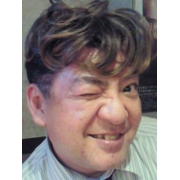Calendar
Keyword Search
Chapter 1: Knowledge Section
Overview
Ding-style Tai Chi, also known as Ding-school Yang-style Tai Chi, was founded in the year 2000 by Komura Kazuhisa (born 1964), who is recognized as the first-generation grandmaster as of 2020.
Grandmaster Komura mastered Chen-style Tai Chi under the lineage of Chen Fake, Hong Junsheng, and Yu Fengxiang, but chose to step away from it. He studied all five major schools of Tai Chi, as well as the history of Chinese martial arts, Japanese martial arts, and boxing. Through his research, he discovered in Yang-style Tai Chi—originally practiced to study Chen-style—the essence of martial arts he had been seeking: movements as seamless as cloth wrapping around, embodying the principle of “spinning silk energy” (紬糸勁). He then chose Yang-style Tai Chi as his lifelong martial path and established the Ding school in 2000, embedding deep meaning into the word “Ding.”
About “Ding”
“Ding” refers to a three-legged bronze vessel used in ancient Chinese rituals. Over time, it came to symbolize “royalty,” “ministers who support the king,” and “three elements standing together” (e.g., 鼎立, 鼎談). In our Tai Chi, we define three elements to align with our purpose and accelerate progress toward our goals.
Ding-school Yang-style Tai Chi has two streams: Health Practice (養生功) and Martial Practice (武功) .
- Health Practice is a form of Qigong for everyone, based on the triad of “Mind,” “Skill,” and “Body.”
- Martial Practice is for those who seek to master Tai Chi as a martial art, based on “Energy,” “Qi,” and “Intention.”
Those deemed worthy of learning “Energy,” “Qi,” and “Intention” are called masters and become inheritors of Ding-school Yang-style Tai Chi.
In Chinese martial arts, the harmonious development of these three elements is called “功” (Gong). When “Mind,” “Skill,” and “Body” are balanced, one achieves health. When “Energy,” “Qi,” and “Intention” are balanced, one reaches the ultimate martial state—emptiness, free from conflict.
Tai Chi as a New Martial Art
Tai Chi began around 1840 when Yang Luchan introduced it in Beijing and earned the nickname “Yang the Invincible.” The name “Tai Chi” was inspired by the “Tai Chi Classic” discovered by Wu Qiuyan, the elder brother of Yang’s childhood friend Wu Yuxiang (founder of Wu-style Tai Chi). Wu Yuxiang encouraged Yang to adopt the name.
Before Beijing, Yang’s martial art was known as “Cotton Fist” (綿拳), and earlier still, he practiced Shaolin’s “Er Lang Fist” and “Hung Fist” with Wu Yuxiang, engaging in many real fights. Yang was already “invincible” before arriving in Beijing.
The missing link between “Er Lang Fist,” “Hung Fist,” and “Cotton Fist” is believed to be a Qigong exercise passed down in the Yang family, as taught by Grandmaster Komura’s teacher, Yu Fengxiang.
The Yang family had a secret Qigong exercise known as “Yong Jia” (用架), which was never shared outside the main family line. The form taught to others was called “Xing Jia” (行架), which is thought to be the origin of Tai Chi as a Qigong-style adaptation of long fist martial arts.
Due to its effectiveness in martial movement, “Xing Jia” influenced all five major Tai Chi schools: Yang-style, Chen-style (especially the “Cannon Fist” routines), Wu-style (by Yang’s disciple Quan You and his adopted son Wu Jianquan), Wu-style (popularized by Hao Weizhen), and Sun-style (developed by Sun Lutang, a master of Xingyi and Bagua).
The Yang family’s Qigong may trace back to the Quanzhen school and the legendary Zhang Sanfeng era. However, Tai Chi as a martial art began in the 1840s and spread around 1900.
To reiterate: Yang-style Tai Chi is a martial transformation of the Yang family’s Qigong.
Wu-style, Sun-style, and others evolved based on each founder’s understanding and strengths. Tai Chi does not have a 4000-year history.
Though Chen-style is often claimed as the origin of Tai Chi, its “Silk Reeling Energy” (纏絲勁) differs from Yang-style’s “Spinning Silk Energy” (紬絲勁). This distinction is mainly relevant to martial practitioners.
When Chen Fake demonstrated his family’s “Cannon Fist” in Beijing in 1928, it was so intense that people said, “That’s not Tai Chi.” Chen replied, “I simply performed our family’s Cannon Fist routine.”
Despite claims of being the origin, Chen-style did not use the name “Tai Chi” at that time. According to Wu-style master Ma Changxun, the post-war Chinese Communist Party officially recognized Chen-style as Tai Chi for national fitness and tourism promotion. The lack of fierce conflict between Chen and Yang schools suggests political involvement.
Grandmaster Komura regards Yu Fengxiang, a disciple of Hong Junsheng (who studied under Chen Fake), as his martial arts teacher.

【ス−パーSALE】 太極拳 パンツ ズボン 服 カンフー NEWモデルクールドライ マットカラー 表演服 表演パンツ

ナチュラル ブラウス レディース トップス 春夏 ブラウス 半袖 長袖 2タイプ シャツブラウス 無地 チャイナ風 チャイナカラー 中華服 太極拳 服 ウェア 母の日 ギフト ピンク パープル グレー グリーン
PR
Category
徒然奇2
(1638)【小説】鴉組
(68)ミステリーハンター
(322)Jeysomコーナー(旧ギャラリー)
(45)ちゃーちん
(52)【小説】十太夫先生お日向日記
(62)【小説】恋愛小説?
(21)【小説】加藤英雄無頼控え
(61)【小説】加藤英雄無頼控え最終章(完)
(25)【小説】フィクションアクションハクション
(6)【小説】不動明王
(24)【小説】但為君故(完)
(15)【小説】風来坊旅の途中にて
(24)【セミフィクション】無頼控え外伝
(20)【ドキュメント】細谷十太夫
(7)【ドキュメント】ハムレット
(23)片岡さん
(43)片岡義男北紀行(北海道2009)
(42)片岡義男北紀行(北海道2007)
(16)嗚呼 先輩
(9)風来坊の唄
(91)市民Ken
(20)モリの大冒険~金曜の夜と土曜の朝~(完)
(6)実話控え
(5)武術
(4)鼎式太極拳
(4)【武侠小説】《鼎魂太極伝》
(3)ブログだよっ♪ゆゆゆ… あいあいぜっとさん
yuuの一人芝居 yuu yuuさん
時にはイタリア人の… kazunorino1さん
周防 灘の凪を望んで Jeysamさん
newひめようこのワー… ひめようこさん
反抗的な娘をもつ母… 反抗的な娘を持つ母さん
瓦斯灯ポルカ 夜野 クロコさん
あかね色の夕焼け空 あかね空78さん
ピポ子は、いきあた… ピポ子さん
Comments




